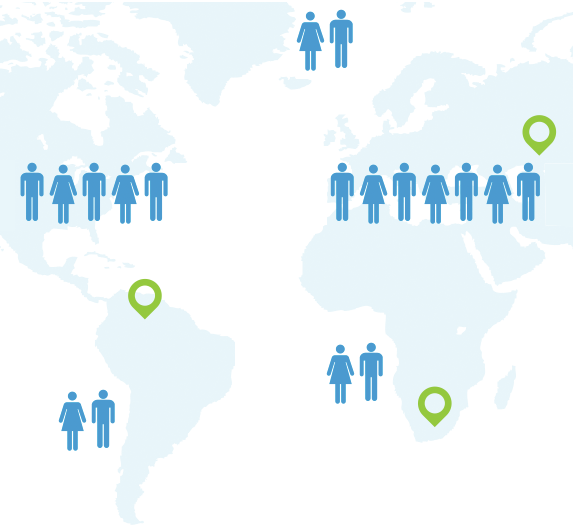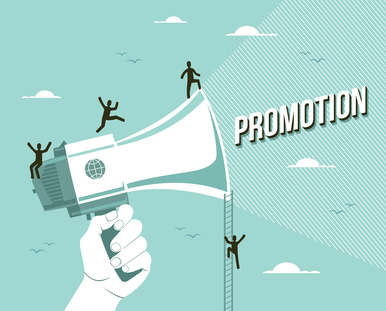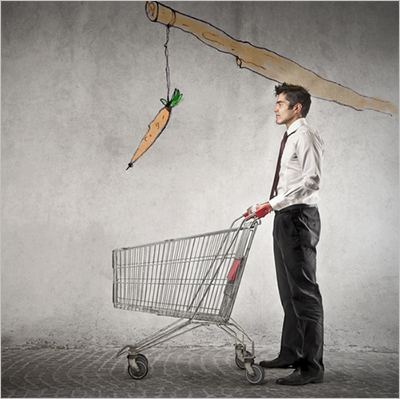We don’t like to think of ourselves as irrational creatures. We may think we’re being rational while making decisions and are considering all the options objectively, but science keeps proving us wrong again and again. Tversky, & Kahneman have demonstrated several ways in which human judgment and decisions differ from the rational choice theory, meaning: our decisions are driven from cognitive biases and NOT objectivity – Neuromarketing tricks our brains play on us that we aren’t aware of.
 Cognitive biases are deviations in our judgment and can be used in many ways to improve our marketing efforts and improve our conversion rate.
Cognitive biases are deviations in our judgment and can be used in many ways to improve our marketing efforts and improve our conversion rate.
When working on your landing page optimization or any other part of your user flow funnel (mobile optimization, shopping cart optimization etc.) there are many things to take into account. The basic place to start with is behavioral targeting: studying the metrics and learning where your users are coming from, their geographical location, their browser and other statistical information that derives from user behavior (see how increased conversion in 50% for IE users in emaze). The second part would be emotional targeting which is also known as neuromarketing.
What is Neuromarketing?
Neuromarketing is all about understanding the world behind the click. Getting the most out of your campaigns by understanding why users make decisions, and helping them choose your product.
Cognitive biases can be used greatly to reduce shopping cart abandonment, increase signups, increase downloads and most importantly revenue. Here is a short list of cognitive biases and how you can use them for your conversion optimization efforts:
Hyperbolic Discounting
The Immediate Purchase Trigger
What would you prefer – $10 coupon today or a $50 coupon in 1 year?
Hyperbolic discounting is when people who are given two similar choices of awards prefer the one that arrives sooner even if it’s worth less. People tend to favor an instant reward than waiting for one.
This cognitive bias could be used to further motivate your users into action and help harness your customers to your side.
An example for using Hyperbolic discounting to increase client acquisition:
- The “Friend Referral Program” – In these types of promotions, companies tend to offer a large amount of money, 1 month free of pay or even an expensive feature for referring potential customers and the reward is applicable only once the client signs on. Most people won’t bother with referring people, as they don’t see a “quick” and close reward. Instead, you could offer a much smaller reward for each referral you receive. Whether it’s a small discount or a coupon, you could receive many more referrals and make your customers much happier by giving them an instant reward. A great example is Dropbox who attributes 35% of their daily signups to their referral program.
Anchoring
The marketing power of smart comparison

Anchoring is the tendency of people to rely on the first piece of information they receive and use that as their anchor in decision-making. Once the anchor is set, all decisions are made according to it, regardless to whether it makes sense or not. We covered this bias in length back in November and also demonstrated how Steve Jobs himself used this bias to introduce the iPad. You can find a few examples and tips to using anchoring for your pricing page optimization and landing page optimization here.
Choice supportive
Positive memory reconstruction
Choice supportive is yet another cognitive bias that impacts the way we buy. In general it’s our tendency to attribute a positive perspective to a decision we’ve made. So if for example we would buy an item and later find out the competing brand was selling the same product for less we would find completely rational reasons to why our more expensive purchase was wiser. We tend to think our past decisions are better than they usually are.
- True Story: A year ago we designed a test for a very large gaming company. The test subject was an online roulette game that triggered a pop up asking users to download the full version to their desktop, fill in a 10-minute registration process and then deposit money to start paying. We tested 5 different emotional triggers (on the pop up only) to do with the self-esteem of the user. The final results were 365% increase to deposit leading from 34 monthly deposits to 158. When we asked part of the customers why they deposited money, the vast majority of them answered that they received the highest bonus ever offered to them, the only issue was that they only received a $10 bonus as opposed to the competitors who were offering $150 bonus.
 Testimonials would be a great way to use this bias and more importantly it puts an emphasis on the importance of your value proposition and that we all have habits that are hard to break. Once we’ve purchased something it is quite hard to convince us that we made a wrong decision, so if you get to your customer soon enough your product or service could become their habit.
Testimonials would be a great way to use this bias and more importantly it puts an emphasis on the importance of your value proposition and that we all have habits that are hard to break. Once we’ve purchased something it is quite hard to convince us that we made a wrong decision, so if you get to your customer soon enough your product or service could become their habit.
False consensus
Attention: You are NOT the targeted audience
False consensus bias refers to the tendency of people to overestimate the level to which other people share their beliefs, attitudes, decisions and behaviors. We tend to believe that our habits and beliefs are more common than they really are, mostly due to the fact that our friends and family whom we spent the most time with are similar to us.
The false consensus bias can have a huge effect on your marketing efforts. While working on our marketing strategy and promotions we tend to think we know what our customers want and how they want it just because we feel a certain way. But in reality, without running an in-depth research we could find ourselves promoting our product in a way that will not interest any of our clients. How can you use it?
Ask yourself:
- Why did you choose to design your web pages the way you did?
- How did you react when/if people had something negative to say about it?
Be sure to refer back to your research and more importantly try sending your ideas and creatives to people who aren’t necessarily close to you to get an “objective” opinion.
Loss aversion
Don’t lose out
 Loss aversion refers to people’s tendency to prefer avoiding losses to acquiring gains. This bias is used tremendously in different marketing campaigns offering “last opportunity” promotions and ensuring that their potential customers will not want lose out on a sale. Check out one of our latest articles giving exact tips and ideas on how to use loss aversion to increase conversion dramatically.
Loss aversion refers to people’s tendency to prefer avoiding losses to acquiring gains. This bias is used tremendously in different marketing campaigns offering “last opportunity” promotions and ensuring that their potential customers will not want lose out on a sale. Check out one of our latest articles giving exact tips and ideas on how to use loss aversion to increase conversion dramatically.
Awareness is key. Taking time to think about your client’s thought process could be the difference between a successful and an unsuccessful marketing campaign. Being aware to these emotional marketing “tricks” could help you avoid pitfalls in your campaigns and increase your conversion by simply using these biases in your favor.
Do you have any examples for using neuromarketing tricks to increase conversion?
5 Neuromarketing Tricks Every Marketer Should Know 4.73/5 (94.55%) 11 votes
Related Posts


5 Neuromarketing Tricks Every Marketer Should Know
We don’t like to think of ourselves as irrational creatures. We may think we’re being rational while making decisions and are considering all the options objectively, but science keeps proving us wrong again and again. Tversky, & Kahneman have demonstrated several ways in which human judgment and decisions differ from the rational choice theory, meaning: our decisions are driven from cognitive biases and NOT objectivity – Neuromarketing tricks our brains play on us that we aren’t aware of.
When working on your landing page optimization or any other part of your user flow funnel (mobile optimization, shopping cart optimization etc.) there are many things to take into account. The basic place to start with is behavioral targeting: studying the metrics and learning where your users are coming from, their geographical location, their browser and other statistical information that derives from user behavior (see how increased conversion in 50% for IE users in emaze). The second part would be emotional targeting which is also known as neuromarketing.
What is Neuromarketing?
Neuromarketing is all about understanding the world behind the click. Getting the most out of your campaigns by understanding why users make decisions, and helping them choose your product.
Cognitive biases can be used greatly to reduce shopping cart abandonment, increase signups, increase downloads and most importantly revenue. Here is a short list of cognitive biases and how you can use them for your conversion optimization efforts:
Hyperbolic Discounting
The Immediate Purchase Trigger
What would you prefer – $10 coupon today or a $50 coupon in 1 year?
Hyperbolic discounting is when people who are given two similar choices of awards prefer the one that arrives sooner even if it’s worth less. People tend to favor an instant reward than waiting for one.
This cognitive bias could be used to further motivate your users into action and help harness your customers to your side.
An example for using Hyperbolic discounting to increase client acquisition:
Anchoring
The marketing power of smart comparison
Anchoring is the tendency of people to rely on the first piece of information they receive and use that as their anchor in decision-making. Once the anchor is set, all decisions are made according to it, regardless to whether it makes sense or not. We covered this bias in length back in November and also demonstrated how Steve Jobs himself used this bias to introduce the iPad. You can find a few examples and tips to using anchoring for your pricing page optimization and landing page optimization here.
Choice supportive
Positive memory reconstruction
Choice supportive is yet another cognitive bias that impacts the way we buy. In general it’s our tendency to attribute a positive perspective to a decision we’ve made. So if for example we would buy an item and later find out the competing brand was selling the same product for less we would find completely rational reasons to why our more expensive purchase was wiser. We tend to think our past decisions are better than they usually are.
False consensus
Attention: You are NOT the targeted audience
False consensus bias refers to the tendency of people to overestimate the level to which other people share their beliefs, attitudes, decisions and behaviors. We tend to believe that our habits and beliefs are more common than they really are, mostly due to the fact that our friends and family whom we spent the most time with are similar to us.
The false consensus bias can have a huge effect on your marketing efforts. While working on our marketing strategy and promotions we tend to think we know what our customers want and how they want it just because we feel a certain way. But in reality, without running an in-depth research we could find ourselves promoting our product in a way that will not interest any of our clients. How can you use it?
Ask yourself:
Be sure to refer back to your research and more importantly try sending your ideas and creatives to people who aren’t necessarily close to you to get an “objective” opinion.
Loss aversion
Don’t lose out
Awareness is key. Taking time to think about your client’s thought process could be the difference between a successful and an unsuccessful marketing campaign. Being aware to these emotional marketing “tricks” could help you avoid pitfalls in your campaigns and increase your conversion by simply using these biases in your favor.
Do you have any examples for using neuromarketing tricks to increase conversion?
Related Posts